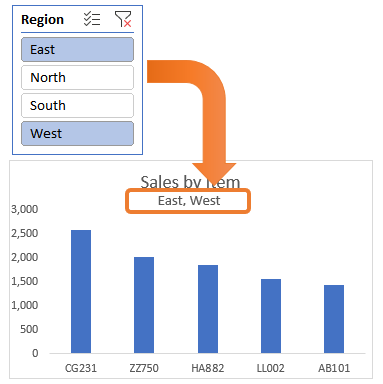

- #Excel vba set chart title how to#
- #Excel vba set chart title code#
- #Excel vba set chart title series#
Add a new series to the scatter plot using the SeriesCollection.NewSeries method.To add data to a scatter plot using VBA, you must complete all these steps: Notice how much the syntax for adding data to a scatter plot differs from adding data to a bar chart. We just made up a set of data with numbers for the X-axis and the Y-axis. The example above doesn’t use the same GDP data we assumed above. Sub create_embedded_ScatterPlot () Dim oChartObj As ChartObject Set oChartObj = ActiveSheet. You can change the name to match the sheet associated with your data. In this example, we’re assuming our data is stored on a worksheet named GDP Data. To add this data to our charts, we simply use the SetSourceData method of the chart object we created earlier. If you’ve been following the wellsrPRO Training Program, you’ll recognize we’ve been interacting with Wikipedia a lot lately as part of our VBA webscraping tutorials.

The Top 10 Countries by GDP (PPP) in 2017, according to the World Bank Let’s use some GDP figures from Wikipedia as our data source. Now that we have our chart, we need to add some data to it. How many times can we fit the words Chart and Object in one sentence!? It’ll make more sense going forward since that’s what we will be working with from now on. The ChartObject object contains a Chart object within it. You’ll likely want to make your embedded chart much bigger than we did in our sample macro. If you’re wondering, this is where font sizes, like 12-point and 10-point, come from. Regarding the 4 required arguments, the units of the dimensions are in points, where each point is 1/72nd of one inch. In our example, we defined ActiveSheet as our parent sheet, which places the chart on our current sheet.
#Excel vba set chart title code#
You can run one of these two blocks of code to add your own charts:īy running these macros, you’ll end up with one of these two Excel chart layouts: The code for creating the two chart types are slightly different, but once they’re created, much of the chart manipulation code is the same.
#Excel vba set chart title how to#
We talked about these two chart types when learning how to print all the charts in an Excel file using VBA The chart sheet doesn’t have any cells or data on the sheet it just sits there on its own tab. There are actually two types of charts in Excel:Īn embedded chart is a chart that appears on a parent worksheet, while a “chart sheet” is a single chart that resides on its own sheet. If you’re using VBA to make an Excel chart from scratch, you first need to add the chart to your workbook. However, if you’re looking for help on a specific topic, just click the link you want in our table of contents: That’s where we’ll first make our charts using VBA. For the downstream macros to make sense, I encourage you to start from the top of this tutorial. This tutorial will walk you through everything you need to know to get started automatically creating and editing Excel charts using VBA. This can be useful for creating visualizations from new data or updating existing visualizations that come from another source (like a coworker who doesn’t want to do all the formatting…). For anyone who wants to translate numerical information into easily-understood forms, charts are an indispensable tool.Įxcel has plenty of great charting features, and VBA allows us to automatically generate these charts. For that reason, people tend to like charts and visualizations, since they can communicate significant amounts of information at a glance. The visual cortex of our brain is highly optimized to make sense of visual data.


 0 kommentar(er)
0 kommentar(er)
